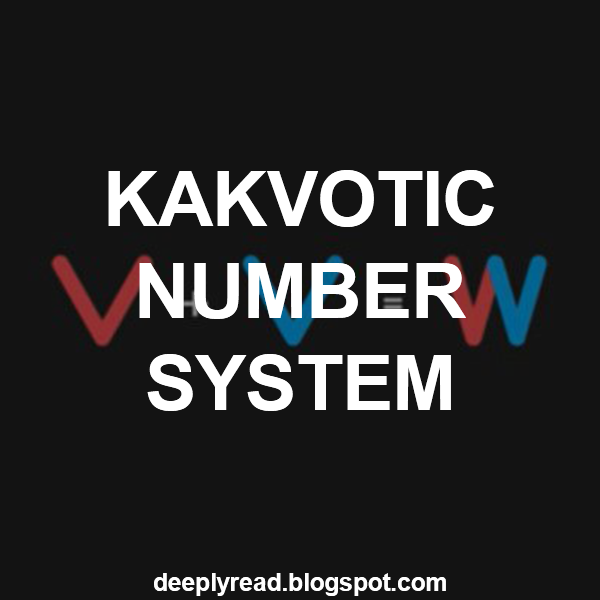Number systems have been invented or discovered in accordance with certain needs throughout human history. Within the framework of these needs, certain human communities have developed Number Systems specific to their civilization. One of the main factors underlying the formation of these Number Systems is that the systems are "base-based". Different bases were used in numeral systems such as Roman numerals and Arabic numerals. For example, the Babylonians used a counting system in the base of sixties, while the counting system was based on the base of ten, which we use today; The Mayans, on the other hand, have developed a counting system at the base of twenty. These number systems are quite old, and many are now abandoned; however, the kakvotic number system, based on the twenty-based counting system found by the Inyupics, is very new compared to other number systems. This interesting system of numbers is therefore worth studying.


How Does The Kakvotic Number System Work?
As we have just mentioned, the main factor in the formation of the kakvotic number system, which has a history of about 25 years, is the structure of the language. Because of the discrepancy between the spoken language and the number system used today (Hindu-Arab), a new number system was needed. For this reason, in 1994, teacher William Bartley with a history of linguistics and his students in his class decided to put an end to this conflict. As for the number system to be developed, these decisions made in the classroom were as follows:
- The symbols used should be easy to remember.
- The relationship between symbols and their meanings must be positive.
- The spelling of symbols should be quick and easy without removing the pen.
- In order for there to be no confusion between the two systems, they must look very different from the Arabic numerals.
- Symbols should be aesthetically beautiful.

If we examine it in some detail, the equivalent of Operation 2+2=4 in the Kakvotic number system is V+V=W. As can be seen simply from this example, the sum of the icons easily gives the result of the operation. For example, if we applied the same logic to the number system we use today, we would get the result 2+2=22.

This example may have been easy for you; so let's look at how the transactions are done by increasing the level a little more. For example , operations such as 3 + 4, 9-3, 17/5 according to the Kakvotic number system are as follows.
Let's make things a little more interesting. The examples we gave included basic-level operations. So how do we make the result of operation 46349226/2826 according to this number system? Let's look together:
Of course, the rest of societies are not expected to move to such a number system in the near future, but this example demonstrates wonderfully how deeply systems that we don't think about much because of their stereotypes can be radically changed with a little effort. We should not be afraid to offer unique problems to today's complex problems. The traditional one doesn't always have to be the better one.